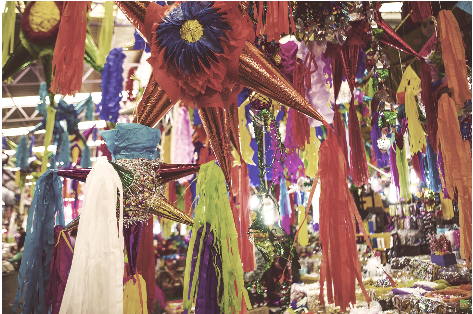St. Patrick’s Day Cocktails
By: Maria Garcia Manzano, AEIC of The Quill
For some university students, St. Patrick's Day may be a day to let loose and drink. COVID-19 has limited our gathering capacities, and while the world is still recovering, Manitoba has begun to loosen some of the restrictions. For this St. Patrick’s Day, if you are comfortable gathering with a few friends and want to experiment with a few alcoholic beverages, I have gathered five different drinks that I believe students will be able to make and enjoy. If you are willing to try any of these drinks, please remember to drink in a safe environment.
Green Beer
What is the one drink almost everyone wants to know how to make on St. Patrick's Day? Green beer, of course! It does have a certain allure. You'll be happy to know that it's beyond simple to make at home.
Recipe: https://www.thespruceeats.com/green-beer-recipe-353182
Guinness and Green Jell-O Shot
What would a St. Patrick's Day party be without a round of shots? A little less fun, possibly. While there are a number of fun shooter recipes that fit the Irish theme, we suggest you try this original take on the popular Jell-O shot.
The Guinness and Green is unique and delicious. The first layer is a gelatin mix containing Irish whiskey and the top is a green-colored gelatin with Irish cream.
Recipe: https://www.thespruceeats.com/guinness-and-amp-green-jelly-shot-recipe-4129357
Irish Cactus
It's time to enjoy a hybrid drink that gives you just a touch of Irish spirit but goes about it in a totally unique way. It is unusual, but before you judge it, you have to try it for yourself.
The Irish Cactus is a slow-sipping, creamy lowball drink that's served on the rocks. It is made mostly of Irish cream, so here's your excuse to pour whichever brand you prefer. The secret ingredient to the Cactus? Tequila, of course!
Recipe: https://www.thespruceeats.com/irish-cactus-cocktail-recipe-759702
Shamrock Shaker
Smooth and creamy, the Shamrock Shaker is an absolute delight! It's simple, satisfying, and light on the liquor; ideal for anyone who's looking for a delicious drink without the hangover risk.
This recipe requires just three ingredients—coffee liqueur is the main spirit, and its coffee flavor is accented with the sweetness of an amaretto. Then just add a long pour of milk and give it a hearty shake. In the end, you'll have a lightly boozy milkshake that's fancy enough for any party.
Recipe: https://www.thespruceeats.com/shamrock-shaker-recipe-759808
Irish Encounter
Step away from everything you associate with St. Patrick's Day cocktails and consider mixing up an Irish Encounter. The "encounter" in the recipe refers to the short shot of Irish cream.
Recipe: https://www.thespruceeats.com/irish-encounter-recipe-760486























